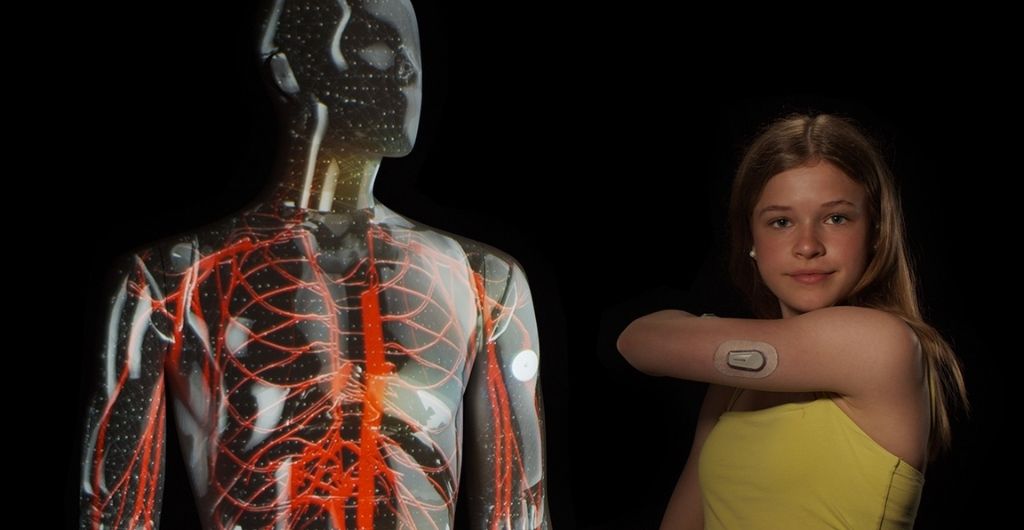
At first glance, Amanda Rosengren looks like any other teenager. She might seem fixated on her smartphone, but Amanda is doing something far more important than scrolling through her social media feeds. Amanda has type one diabetes, and her phone — alongside a device containing a tiny wire created by Sandvik — help monitor her glucose levels without the need for daily testing.
Type one diabetes is a life-long disease that can be very dangerous if blood sugar levels are not constantly monitored and adjusted with insulin. Amanda received her diagnosis aged four, and her diabetes soon began to put pressure on her family’s life.
They were incredibly vigilant when managing Amanda’s glucose levels, and it wasn’t long before her tiny arms were covered in needle marks — a consequence of the traditional pin-prick glucose monitoring method.
“We were constantly operating with caution,” explained Helen Blomqvist, Amanda’s mother. “Monitoring Amanda’s blood sugar levels was a full-time job, especially as she was diagnosed so young and couldn’t take any responsibility herself. Using needles all the time wasn’t easy.”
But in 2013, the family heard about the continuous glucose monitor (CGM) that measures tissue glucose 24 hours a day. Amanda’s mother liked the idea of her daughter seeing her glucose value at any time, and the trend direction the value is moving in.
A CGM device is comprised of three components — the monitor, the transmitter and the sensor. The sensor is among the most critical parts of the CGM, and its size is thinner than that of a needle.
The sensor measures the body’s interstitial glucose level, the glucose found in the fluid between the cells, every few minutes. It does this by measuring a chemical reaction involving glucose oxidase.
This enzyme helps convert glucose to hydrogen peroxide. Electrical signals are generated when the hydrogen peroxide reacts with the platinum-based sensor, and this electrical current is transmitted through a tiny wire. A higher electrical current indicates higher levels of glucose.
Amanda’s medical diabetic team suggested she should test the CGM in 2014. The new technique proved successful and provided Amanda with a new lease of life. Since Amanda’s blood levels are constantly monitored and registered in a smartphone app, both Amanda and her family have benefitted from new-found freedom and spontaneity. Today, Amanda is an avid gymnast and carefree thirteen-year-old.
Alongside the CGM, Amanda also has an insulin pump attached to her stomach, which automatically delivers the right dose of insulin according to the measurements the app recommends.
“Constantly monitoring the blood sugar levels of a diabetic was a never-ending dance between eating and insulin injections to keep the blood sugar at a steady level,” said Blomqvist. “Amanda’s levels fluctuated a lot, so were especially difficult to monitor. The CGM provides us with much more reassurance, it has an alarm function integrated into the system, so we sleep much better knowing that we’ll be awakened if Amanda’s blood sugar levels get too high or low.”
The wire that transmits the device’s electrical currents is an integral component. The polymer coated precision wire was inserted under the skin of Amanda’s arm. The device Amanda uses includes EXERA® fine medical wires from Sandvik, which can be developed for multiple sensing technologies including glucose monitoring, temperature and electrical pressure devices.
“The EXERA® wire really showcases the power of micro technology,” explained Gary Davies, head of the medical business unit at Sandvik Materials Technology. “Its small size and high quality make it ideal for use in medical devices implanted inside humans. Usually, these types of wire are most commonly found in consumer electronics.
“The wires are not simply devices that enable other functions in medical devices to work. Here, the wire actually works as the sensor — it’s the business end of the CGM device.
“For people like Amanda, the freedom and autonomy that tech like the CGM provides is life-changing.”








